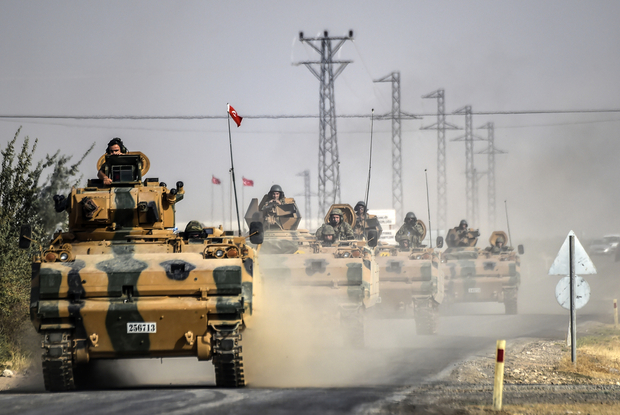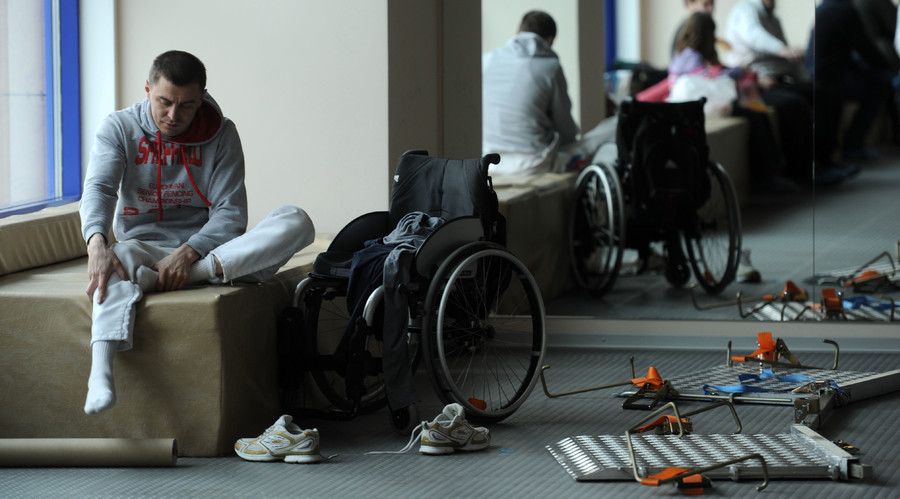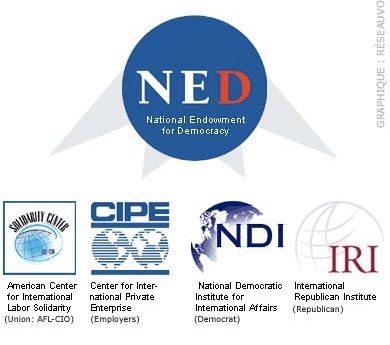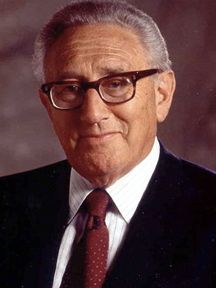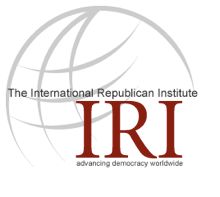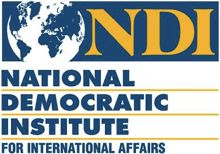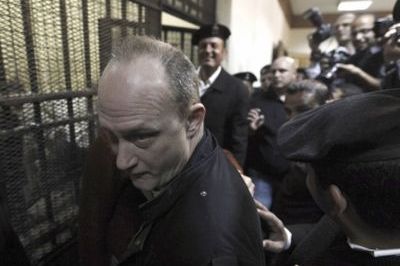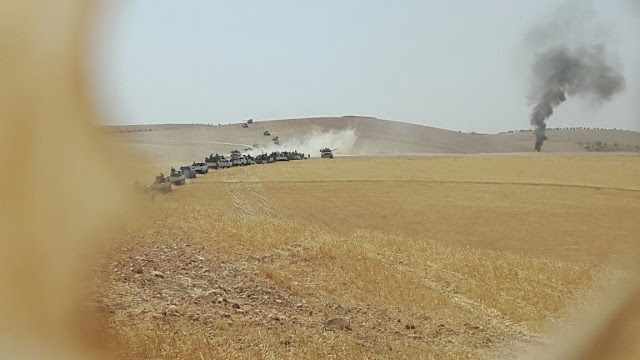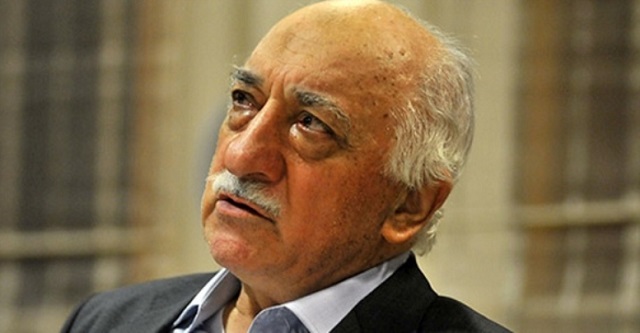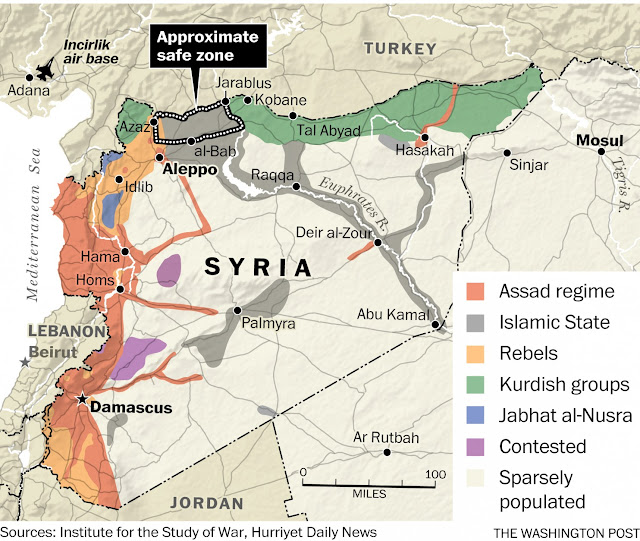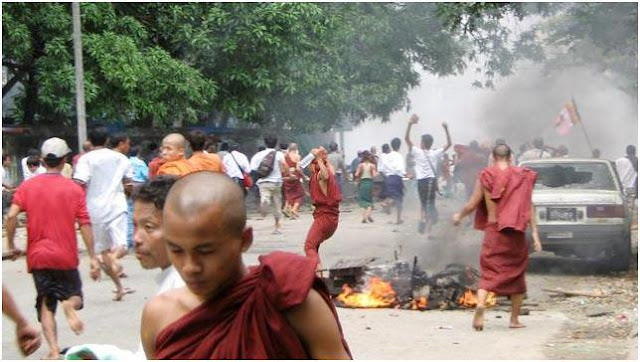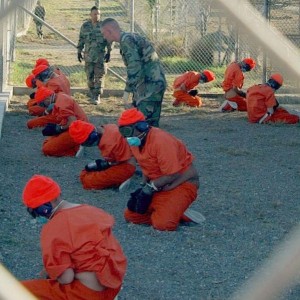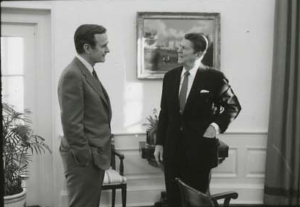El 16 de julio de 2016 hubo un aparente conato de golpe militar contra el gobierno del dictador Recep Tayyip Erdoğan en Turquía. En realidad, un operativo militar planeado y ejecutado milimétricamente por el Pentágono, la OTAN y el propio Erdogan para mostrar a Turquía en una situación de viraje hacia Rusia y así desarmar el posicionamiento geopolítico de este país (Rusia) en Siria y Oriente Medio. Y ocurre cuando en estos últimos días el ejército antiimperialista sirio junto a sus aliados (Rusia, Irán y el Hezbolla) prácticamente estaba aplastando a las fuerzas paramilitares estadounidenses que operan en su territorio.
Las transnacionales de la información han cumplido su papel. Han descargado toneladas de desinformación para distorsionar este hecho. El asunto era mostrar a Turquía y Estados Unidos enfrentados. Esto no es nuevo, lo hacen desde hace mucho tiempo con el Estado Islámico. Y el operativo militar fue pintado como un golpe de estado fallido del Pentágono contra Erdogan.
Desde aquí reto a quienes sostienen esto que me demuestren que en un plazo de tres meses Turquía este fuera de la OTAN. ¿Un golpe de estado del Pentágono sofocado? ¿Sabéis de lo que estáis hablando? Si en verdad hubiera sido así, entonces aquello sería un acontecimiento de tremenda envergadura histórica (una verdadera revolución en el mundo) que de inmediato estaría conduciendo, primero, a la retirada de Turquía de la OTAN, luego, a la finalización de la agresión a Siria y, finalmente, a la pérdida definitiva de la hegemonía mundial estadounidense con grandes cambios en Europa y el mundo entero. Entonces semejante acontecimiento no es cualquiera y, no lo ejecuta cualquier individuo. Para esto deben cumplirse algunas precondiciones. Sus ejecutores deben poseer una solvencia moral revolucionaria a toda prueba. Y Recep Tayyip Erdoğan ciertamente no está a esa altura. Definitivamente.
Además, si hubiera constituido para el Pentágono un intento fallido de golpe militar, ahora mismo estaríamos frente a una seguidilla de nuevas intentonas golpistas hasta echar del gobierno a Recep Tayyip Erdoğan. Sin embargo no ha ocurrido así. Hay tranquilidad en las relaciones bilaterales turco-estadounidense. Es más, el Pentágono ni siquiera ha respondido verbalmente.
Veamos esto:
I.- Oriente Medio una región geoestratégica de primer nivel para la subsistencia del sistema capitalista.
Ante todo reafirmo la existencia de los grandes cambios. En realidad cambios históricos. Es bueno estar claros en esto. No está demás repetir que esto proviene a consecuencia de la gran crisis económica en que está envuelto el mundo desde el año 2008 y en el marco del ciclo económico largo de contracción y crisis que envuelve el sistema desde 1973, el mismo que ha llevado a la bancarrota económica y la pérdida de la hegemonía mundial estadounidense, la ascensión económica de China como primera potencia capitalista, el surgimiento de nuevas potencias económicas, la fractura estadounidense en Oriente Medio, etc. Esta es la tendencia actual del planeta.
Pero el surgimiento de nuevas potencias económicas no solo está referido a los países agrupados en torno al llamado grupo económico BRICS, sino también a algunos países del área de dominio estadounidense que en este caso ha corrido al empuje de los grupos monopólicos que se habían visto afectados por la gran crisis económica y los grilletes que les había impuesto aquel (Estados Unidos), esto sobre todo en los países europeos que tras el brItxis británico del 23 de junio de 2016 se ha hecho muy claro, por lo que aquellos bloques económicos no solo están referidos a los grupos emergentes, sino, también abarcan antiguos grupos monopólicos que incluso controlan estados nacionales de gran incidencia en los destinos del planeta y que han venido re-direccionando sus posturas respecto a la política exterior estadounidense. Y la consecuencia final de esto es el actual proceso, muy fuerte, de reparto de mercados y zonas de influencia que sacude el planeta inmerso en duros enfrentamientos de bloques.
En este marco Oriente Medio es una región muy estratégica para la supervivencia del sistema imperialista (segunda y última fase del capitalismo) por el asunto energético, es decir, por el petróleo y el gas, base del desarrollo del sistema de producción capitalista, máxime si se tiene en cuenta que toda burguesía financiera (incluida la china) son absolutamente contrarias a cualquier alternativa al petróleo, sobre todo, en una situación de grave crisis económica que los aplasta. Cierto, todas estas burguesías viven aferradas al petróleo. Sin equivocarnos podemos decir que los actuales conflictos en el mundo provienen de la codicia de estas burguesías por el control de este valioso elemento energético. Y tengamos presente que el reservorio más grande de petróleo del mundo está ubicado justamente en esta región (Oriente Medio).
En esto si efectuamos una operación muy sencilla consistente en sumar los niveles de producción petrolera de Arabia Saudita, Irán, Iraq, Qatar, etc., es decir, la producción petrolera de todo el Oriente Medio el resultado es fabuloso. Una impresionante cantidad que ha perturbado la mente de las burguesías financieras haciéndolas crecer exponencialmente sus codicias.
Estas son las razones por las que, por ejemplo, Estados Unidos este agolpado desesperadamente sobre esta región (Oriente Medio). Pero también lo están China y Rusia que tienen esas mismas perspectivas. Esas mismas agitaciones. Por eso la conmoción en esta región.
Consecuentemente es de entender que las agitaciones de las burguesías financieras por el control del Petróleo pueden cambiar el rumbo de los más grandes e influyentes gobiernos, es decir, el destino de gobiernos y el equilibrio político de regiones enteras.
Entonces históricamente Oriente Medio ha sido el centro de grandes disputas por el control del petróleo. Los pueblos árabes han soportado dolorosas guerras por este asunto.
Además, es por esta razón y no por alguna casualidad, que aquí los estadounidenses hayan ubicado el depósito más grande de armas, convencionales y estratégicas del planeta (Israel), también su flota naval más importante (V flota) en Manama (Bahréin) que había entrado en operaciones el 26 de abril de 1944. Además instituyendo a Arabia Saudita en el altar como su joya estratégica.
Pero centremos nuestra inquietud en los tiempos recientes, particularmente en los que corren desde principios del presente milenio.
A inicios de este milenio, tras una década de jolgorio por la implosión de la ex URSS (1991) y de la instalación del sistema unipolar, Estados Unidos se vuelve a la realidad asustado por el renacimiento de Rusia y los avances económicos en China. Entonces observa con particular interés el Este del planeta sobre todo el Oriente Medio y, para concretar aquellos planes trama el auto atentado a las Torres Gemelas el 11 de septiembre de 2001. Por los buenos resultados que había obtenido en Afganistán (1979) con sus bandas paramilitares, llama a esta nueva ofensiva, una operación antiterrorista. A partir de entonces el mundo ingresaba a una espiral de violencia, excesivamente trágica y furibunda (Afganistán 2001, Irak 2003).
Además, no olvidemos que todos estos hechos ocurren inmersos en el ciclo económico largo de contracción y crisis del sistema de producción capitalista que estaba en curso desde 1973.
Hasta el año 2008 Walls Street, el pentágono y los gurús económicos hicieron todo, porque la crisis económica jamás llegara hasta su territorio en las dimensiones actuales. Entonces la contención del ascenso económico de China fue llevada a un nivel muy fuerte y que posteriormente (finales de 2010) llevó a la ruptura del acuerdo estratégico que en el nivel económico existía desde 1978 entre Estados Unidos y China. Además, la guerra monetaria (exige en todo momento la revalorización del yuan) y el proteccionismo económico se hicieron persistentes. Y aun así la crisis llegó en 2008 y, no fue una simple crisis, sino una gran crisis que condujo de inmediato su economía a la bancarrota.
En 2010 estaba decidida a la consolidación de su posicionamiento en Oriente Medio. Debía golpear a Irán para luego ir directamente sobre Rusia. Pero previamente debía ocupar otros países, en este caso Libia y Siria. No olvidemos que Afganistán e Irak ya estaban bajo su férula desde el 2001 y 2003 respectivamente, reconvertidas en la “Edad de Piedra”, es decir, devastadas.
El asunto fue muy serio. En Libia a finales de 2010 no tuvo reparos, asesinó a su presidente, el coronel Al Gadafi, a vista y paciencia del mundo. El genocidio fue atroz. Allí golpeó sin contemplaciones los intereses de China. No le interesó para nada. En 1999 ya habían bombardeado, en los Balcanes, su embajada.
Pero cuando a finales de 2011 el Pentágono fue a Siria se encontró con que Rusia y China habían pasado a la ofensiva. Primero en el Consejo de Seguridad de las Naciones Unidas fueron vetadas sendas resoluciones de instalación de “Espacio Aéreo” sobre territorio sirio. Querían un “Espacio aéreo” como habían hecho en Libia. En efecto el 14 de octubre de 2011 Rusia y China se opusieron en el Consejo de Seguridad de las Naciones Unidas a una resolución contra Siria elaborada por Inglaterra, Francia y Alemania a nombre de Estados Unidos. Y luego enviaron equipamiento de defensa antiaérea (los mortíferos S-300). El pentágono estaba furibundo de rabia. Esto era inesperado. No estaba en sus planes. Entonces se instaló de forma automática un gran impasse muy difícil de remontarla. La ocupación de Irán estaba cada vez más lejos.
Ante esta situación sus tácticas se volvieron hacia sus bandas paramilitares. Saltaron a la palestra de forma inusitada Al Qaeda y el Estado Islámico. Este último en 2014. Pero la derrota militar estadounidense estaba sellada. Sus bandas paramilitares nada podían hacer, a lo mucho solo retrasar esa derrota, pero el heroico pueblo sirio necesariamente los iba derrotar, la tendencia mundial estaba a su favor. Una disyuntiva sencilla que los “doctores” del Pentágono no entendían y no lo entenderán nunca.
Entonces Estados Unidos tramo en forma desesperada algunos mecanismos para seguir en su intento por ocupar Siria y viabilizar sus negros propósitos: ir sobre Irán y Rusia. En realidad fueron mecanismo de grandes trascendencias. Según sus “cerebros grisis” orientadas en lo fundamental contra Rusia que obstaculizaba el cumplimiento de sus planes a fin de hacerlo retroceder en Siria. Algunos dicen que son mecanismos maquiavélicos, que en realidad es esto lo único que le queda, pues en términos generales la hegemonía mundial estadounidense está quebrada. Esto es determinante en los fracasos de sus planes en Oriente Medio. Se sabe que Rusia, China e incluso algunos países europeos (Alemania, Francia, etc.) están en mejores condiciones.
II.- El acuerdo nuclear iraní:
Este es el primer mecanismo que utiliza el grupo de poder de Washington para salvaguardar sus intereses y su posicionamiento geoestratégico en Oriente Medio. Se puso en ejecución tras los fracasos de sus fuerzas paramilitares en el terreno de la guerra en Siria.
En efecto por las circunstancias anteriores, Estados Unidos se vio obligado a firmar el acuerdo nuclear iraní con el grupo de los cinco más uno (Reino Unido, China, Francia, Rusia y Estados Unidos) más Alemania, el 14 de julio de 2015 en Viena (Austria) y con levantamiento efectivo de sanciones, estadounidenses y europeas, el 16 de enero de 2016. La firma de aquel acuerdo fue en forma desesperada por la parte estadounidense abrumada por los fracasos militares de sus secciones paramilitares y jugándose el todo por el todo, incluso afectando a su gran joya estratégica y del conjunto del sistema imperialista (Arabia Saudita), buscando salir airoso de la gran crisis económica, apuntalando contra Rusia a fin de hundir su economía, supuestamente obligándolo a competir con Irán, tratando de quebrar su alianza con este país (Irán) y finalmente arrojarlo de Siria. A este respecto hay que agregar por ejemplo el desplazamiento de Arabia Saudita por Rusia en el suministro de petróleo a China. En efecto en mayo de 2015 estos suministros desde Rusia han superado siete veces los importes desde Arabia Saudita.
Entonces, el impulso del acuerdo iraní por parte de Estados Unidos no ha sido porque este país haya querido zanjar sus diferencias con Irán o porque ya no soportaba más la invulnerabilidad de su soberanía (o tal vez del Estrecho de Ormuz), como sostiene la vulgaridad de la prensa occidental y bajo bombo de algunas prensas medio progresistas (Rebelión), sino, porque entendía a cabalidad la importancia geoestratégica de Oriente Medio en la actual coyuntura, sobre todo, de vida o muerte para su dominio sobre esta región.
Al final, como estaba previsto, esto fue un contundente fracaso, pues Rusia e Irán lejos de ingresar a un conflicto geopolítico más bien se han convertido en importantes socios estratégicos: probablemente en el próximo conclave de la Organización de Cooperación de Shanghái (OCS) Iran sea admitida como miembro pleno. Entonces Estados Unidos empezó a desconocer aquellos acuerdos. Las últimas noticias a este respecto indican la advertencia de Irán por la violación de tales acuerdos.
Veamos el siguiente apunte:
“Pese a la eliminación de las sanciones, empresas de todo el orbe se quejan de que las relaciones comerciales con Irán siguen siendo difíciles debido a la preocupación persistente de acciones punitivas estadounidenses. Irán exige a Washington que tome medidas para que los bancos europeos abandonen las reticencias, por temor a represalias estadounidenses, a realizar negocios con Irán en la era postsanciones. El pasado 14 de junio, el Líder de la Revolución Islámica de Irán, el ayatolá Seyed Ali Jamenei, denunció que EE.UU. no ha cumplido, hasta la fecha, la mayor parte de las obligaciones estipuladas en el JCPOA y advirtió que si Washington rompe el acuerdo, Irán también “lo quemará” (1).
III.- Operativo militar del 16 de julio de 2016 milimétricamente planificado y ejecutado por el Pentágono, la OTAN y Erdogan, para desarmar el posicionamiento geopolítico de Rusia sobre Siria y Oriente Medio.
En efecto este operativo militar viene a constituir el segundo mecanismo llevado adelante por el grupo de poder de Washington para salvaguardando sus intereses y su posicionamiento geoestratégico en Oriente Medio
Pero para un mejor entendimiento de este tema previamente debemos observar las potencialidades geoestratégicas de Turquía. El asunto es: ¿Por qué es muy importante para el Pentágono este país?
Primero, Estados Unidos tiene depositado armamento nuclear en Europa en cinco países que son: Alemania, Italia, Bélgica, los Países Bajos y Turquía.
Se dice que en la base aérea de Incirlik están depositadas 90 ojivas nucleares. Esta base aérea (en turco, İncirlik Hava Üssü) es una instalación de la United States Air Force de los Estados Unidos que está ubicada a 8 kilómetros (5 millas) al este de Adana, la quinta ciudad más grande del país y en un subterráneo muy profundo debidamente estructurado.
Segundo, como consecuencia de lo anterior Turquía es un miembro de gran valor estratégico para la OTAN, la alianza trasatlántica en la que Estados Unidos sostiene su trascendencia mundial. Ni que hablar de su ejército, este es punta de lanza de la OTAN en esta región (Oriente Medio) junto a Israel sionista. El derribo del Sukhoi Su-24 ruso el 24 de noviembre de 2015 y el establecimiento del cuartel general de las bandas paramilitares estadounidenses en el sur de Turquía, así lo ameritan.
Tercero, Turquía tiene los estrechos del Bósforo y los Dardanelos como zonas muy estratégicas que dan paso entre el mediterráneo y el mar negro y, también sirven de puente entre Europa, Asia e incluso África. En realidad una región sumamente estratégica.
Wikipedia dice a este respecto lo siguiente: “El mar Negro se sitúa entre el sureste de Europa y Asia Menor. Está cerrado por Europa, la península de Anatolia y el Cáucaso. El estrecho del Bósforo lo conecta con el mar de Mármara y el estrecho de Dardanelos conecta a este con el mar Egeo, que es una región del mar Mediterráneo. Estas aguas separan Europa del Este de Asia Menor. También está conectado con el mar de Azov por el estrecho de Kerch. Tiene una superficie de 436 400 km2 (sin incluir el mar de Azov), una profundidad máxima de 2212 m2 y un volumen de 547 000 km3.3”
Cuarto, sobre Recep Tayyip Erdoğan debemos apuntar lo siguiente: ha ganado tres elecciones consecutivas. El AKP, su partido, ha ganado en 2002, ganó de nuevo en 2007 y finalmente en 2012. Es decir es una pieza clave en el control y dominio de Estados Unidos sobre Turquía. Este no es ningún nacionalista como algunos suponen. Es un declarado agente de los mandos militares más oscuros y putrefactos de Washington. Un agente completo de la CIA. Un declarado títere del imperialismo estadounidense que sigue a pie juntillas sus mandatos y directivas. Consecuentemente es falso que este conduciendo un gran cambio e incluso haya virado hacia Rusia.
Y en estas condiciones debemos destacar que la lucha entre las potencias capitalistas por el control de las zonas petroleras, los mercados petroleros y los pasos marítimos, particularmente en Oriente Medio y el mercado europeo, es a muerte.
Sobre esto quisiera tomar nota lo escrito por German Gorraiz Lopez, que es el que mejor ha resumido este asunto.
Veamos:
“Teniendo en cuenta que el consumo doméstico de EEUU se movería en la horquilla de los 16 a los 20 millones de barriles diarios. El proyecto del gasoducto conocido como Nabucco West ,(proyectado por EEUU para transportar el gas azerí (Azerbayan) a Europa a través de Turquía, Bulgaria, Rumania y Hungría y así evitar el chantaje energético ruso), fracasó al haberse inclinado Turkmenistán, Uzbekistán y Kazajistán por el proyecto ruso del gasoducto South Stream y retirarse finalmente Azerbaiyán del proyecto en junio de 2013, siendo elegida la vía alternativa del gasoducto transadriático, (TAP, Trans Adriatic Pipeline), mediante el cual Azerbaiyán exportará su gas hacia Europa a través de Grecia, Albania e Italia pero que sólo puede transportar un tercio del proyecto Nabucco, por lo que no supone ninguna amenaza para los intereses de Rusia. Asimismo, la coalición de intereses ruso-alemanes ideó el proyecto Nord Stream inaugurado en el 2011 y que conecta Rusia con Alemania por el mar Báltico, con una capacidad máxima de transporte de 55.000 millones de metros cúbicos (bcm) de gas al año y con una vigencia de 50 años. Dicha ruta se estima vital para Alemania y los Países Nórdicos, por lo que ha sido declarado de “interés europeo” por el Parlamento Europeo y crucial para la geoestrategia energética rusa pues con dicha ruta se cerraría la pinza energética rusa al descartar a las Repúblicas Bálticas y Polonia como territorio de tránsito”.
Continua: “Por parte rusa, en el 2007 presentó el proyecto del gasoducto South Stream , gasoducto de 39.000 millones de dólares que recorrería Rusia, Bulgaria, Serbia, Hungría, Eslovenia e Italia y que debía garantizar el suministro de gas ruso a la UE (evitando el paso por la pro-estadounidense Ucrania tras la crisis del gas del invierno del 2.006 y los recortes de suministro producidos en incontables países de la UE (el 80% del total del gas que la UE importa de Rusia pasa por Ucrania y abastece en más de un 70% a países como los Países bálticos, Finlandia, Eslovaquia, Bulgaria, Grecia, Austria, Hungría y República Checa), dormirá en el limbo de los sueños tras la negativa de Bulgaria a participar en dicho proyecto debido a las fuertes presiones de EEUU. Así, el objetivo inequívoco de EEUU es sustituir la rusodependencia energética europea (30% del gas que importa la UE procede de Rusa) por la frackingdependencia, inundando el mercado europeo con el GNL (gas natural frackeado en EEUU y transportado mediante buques gaseros) para hundir los precios del gas ruso así como impulsar la utilización de la técnica del fracking en todos los países de la Europa Oriental, el llamado “arco del fracking europeo” que se extendería desde los Países Bálticos hasta la Ucrania europea, pasando por Polonia, República Checa, Eslovaquia, Hungría, Rumania y Bulgaria y que dependerá de la tecnología de empresas estadounidenses como Chevron o Shell” (2).
Con este preámbulo pasamos de frente a explicar este asunto:
1.- Lo que han dicho y aun dicen las prensas:
Telesur, el 16 de julio de 2016, a unas cuantas horas de los hachos, dijo lo siguiente (A este respecto debo aclarar que las prensas que más estaban agitadas han sido las prensas rusas: Sputnik y Rusia Today):
“Al caer la tarde de este viernes (15 de julio de 2916), el movimiento de tropas y el paso de aviones militares sobre Ankara, la capital de Turquía, pusieron en alerta a la población. Un comunicado posterior confirmó que una facción del Ejército turco estaba intentando tomar el poder con el fin de proteger el orden democrático y mantener los derechos humanos en el país euroasiático. Los militares disidentes impusieron la ley marcial en todo el país, desplegaron tanques en las autopistas de acceso a Estambul y Ankara, la dos ciudades más importantes del país. Estas medidas fueron apoyadas por blindados, cazas y helicópteros del Ejército”.
Continua: “Casi siete horas después, el presidente Erdogan aterrizó en el aeropuerto internacional Atatürk de Estambul, luego de que el portavoz de la presidencia anunciara el fin de la intentona golpista. Desde las afueras del aeropuerto internacional, el mandatario confirmó ante los medios de comunicación que el golpe fue sofocado y el Gobierno seguía en funciones. Además, advirtió de que “los involucrados pagarán un alto precio” (3).
Inmediatamente hubo un “contragolpe” que significaba una razzia descomunal de expulsiones de elementos anti-Erdogan, es decir, anti-estadounidense (sobre esto más información, abajo).
Luego tuve noticias que indicaban, casi de forma inmediata, que Turquía estaba retirando sus militares y agentes de inteligencia de Alepo e Iraq.
Veamos:
“Por otra parte, el Ejército turco ha ordenado a sus tropas estacionadas en Iraq que se retiren inmediatamente del país y vuelvan a sus guarniciones en Turquía. La decisión del Ejército turco se produjo tras el fracaso del golpe de estado en Turquía en la noche del 15 de Julio” (4).
El 19 de julio de 2016 circuló en, katehon.com, que el intento de golpe militar habría sido ejecutado por los partidarios del líder islamista Fethullah Gülen que vive en Pennsylvania, en los Estados Unidos, y su movimiento “Khizmat” a causa del acercamiento de Turquía con Rusia, Irán y China. Aunque esta versión ya había sido manoseada con persistencia desde el inicio de estos hechos, que incluso confundió a algunos reconocidos analistas del mundo.
Veamos:
“La red de Gülen actuó por órdenes de los EE.UU. una vez que los altos mandos Kemalistas, cuyo ideólogo es el destacado político Dogu Perincek, plantearon la cuestión de acelerar radicalmente el curso del acercamiento de Turquía con Rusia, Irán y China, e incluso salir de la OTAN. La estructura de Gülen penetró hasta el escalón más alto de los servicios gubernamentales y de inteligencia. Erdogan entiendó el peligro de esta secta sólo en el último momento, cuando los gulenistas, una vez más a las órdenes de los Estados Unidos, intentaron llevar a cabo una revolución de color en la plaza Taksim, tratando de unir a Kemalistas, liberales y todo aquel que se opone a Erdogan. Las purgas siguientes, sin embargo, no liquidaron toda la estructura. El intento de golpe militar pro-estadounidense se hizo en el mismo momento en que Erdogan cambió su curso en la política exterior y comenzó a construir una alianza estratégica a lo largo del eje de Ankara-Moscú, incluyendo el cambio de su posición sobre el tema sirio. Con el fin de evitar la creación de un eje euroasiático Ankara-Moscú, los EE.UU. trataron de organizar un golpe de estado recurriendo a sus redes (el movimiento “Khizmat” y los partidarios del líder islamista Gülen, residente en los Estados Unidos y que coopera activamente con las agencias de inteligencia de los Estados Unidos)” (5).
El Partido Comunista, de Turquía se pronunció el 26 de julio de 2016, en realidad ni fue muy claro ni muy contundente, solo describiendo el golpe como “una lucha de poder entre los seguidores de Erdoğan y el movimiento Gulen el cual habría adquirido una nueva dimensión con las grandes purgas de Gulenistas recientemente. “Mientras el peso económico y político de esta lucha aumenta la lucha también tiene una dimensión internacional y los centros imperialistas están apoyando a estas facciones. Es verdad que la mayoría de los oficiales que participaron en el intento de golpe son Gulenistas y que el movimiento Gulen tiene conexiones con EEUU. Hasta un cierto punto es correcto pensar que un golpe de estado no tomaría lugar en Turquía sin la aprobación de EEUU ya que Turquía es un aliado militar cercano y miembro de la OTAN. La principal razón para que la mayoría de los altos oficiales en las Fuerzas Armadas Turcas, frustrados con el AKP (Partido de la Justicia y el Desarrollo) no intentaran un golpe fue el apoyo brindado por parte de EEUU al AKP” (6).
El 31 de julio de 2016 Sputnik hizo circular la noticia que indicaba que el presidente turco, Recep Tayyip Erdogan, pasaba a tener el control directo sobre las Fuerzas Armadas de Turquía.
Veamos:
“Asimismo, el mandatario y el primer ministro del país se han otorgado el derecho de emitir órdenes directas a las tropas sin que tengan que ser previamente aprobadas por cualquier otra persona autorizada. De esta manera, los militares se ven obligados ejecutar las órdenes que dicten los dos dirigentes de forma inmediata, destaca el medio. Además, según el nuevo decreto, también se cierran todas las academias militares, que posteriormente serán transformadas e integradas en la Universidad Nacional de Defensa compuesta por las academias profesionales. Además, la Academia Médica Militar de Gulhate, en Estambul, pasa a estar bajo el control del Ministerio de Salud” (7).
El 06 de agosto de 2016 se volvió a insistir sobre el supuesto cierre del paso fronterizo de Turquía hacia Siria, Bab al-Hawa, esto según informa Deutsche Wirtschafts Nachrichten.
Veamos:
“Militantes del Ejército Libre Sirio, grupo armado apoyado por EEUU, ya no pueden acceder a Siria desde Turquía, después de que Ankara cerrase el paso fronterizo de Bab al-Hawa, informa Deutsche Wirtschafts Nachrichten. De esta manera, el líder turco, Recep Tayyip Erdogan, no hizo solo un esfuerzo para normalizar las relaciones con Bashar Asad, sino que se puso al lado de Moscú en el conflicto sirio, concluye la edición alemana. “Nuestro principal objetivo es establecer buenas relaciones con Siria, Irak y los países vecinos del Mediterráneo y el Mar Negro”, cita el Deutsche Nachrichten Wirtschafts al primer ministro turco Binali Yildirim” (8).
Finalmente mientras estaba finalizando las últimas correcciones a este artículo, el 09 de agosto de 2016, llegó a mis manos la noticia que indicaba que Erdogan estaba aliándose con Putin para fortalecer a Al-Asad y desesperar a Estados Unidos: En realidad este tipo de noticias han sido persistentes en los últimos días. Según la avanzadilla del ejército estadounidense el denominado “Observatorio Sirio para los Derechos Humanos” (OSDH): “Después de la tentativa militar, se ha reducido significativamente el flujo de municiones y armas desde el territorio turco hacia Siria”. Algo que da mucho que pensar.
Veamos
“El cerco impuesto a esa área de Alepo dio el mes pasado un impulso inesperado cuando un fallido golpe militar en la vecina Turquía allanó el camino para el acercamiento de Ankara y Moscú, cuyas relaciones se habían enfriado por el derribo de un caza ruso por aviones turcos. De hecho, en medio de las críticas del Occidente, sobre todo Washington —acusado por Ankara de ser cómplice de los golpistas— por la reacción de Turquía al fracasado golpe, el presidente turco, Recep Tayyip Erdogan, decidió acercase a su par ruso, Vladimir Putin, forjando así una nueva alianza estratégica. Después de la tentativa militar, se ha reducido significativamente el flujo de municiones y armas desde el territorio turco hacia Siria. Las fuerzas sirias “no habrían podido asediar a Alepo sin el acercamiento turco-ruso. El apoyo militar ya no es como antes”, según responsables del OSDH” (9).
2.- Lo que realmente sucedió:
Como hemos dicho en la introducción de esta nota, el 16 de julio de 2016 hubo en Turquía una operación militar planificada y ejecutada milimétricamente por el Pentágono, la OTAN y el propio Recep Tayyip Erdogan a fin de distraer, confundir y desarmar el posicionamiento geopolítico de Rusia en Siria y Oriente Medio, esto ocurre en un momento crucial de sus fuerzas paramilitares en ese país (Siria), pues, estos prácticamente están siendo diezmados en estos últimos días y su derrota huele a una derrota vergonzosa.
Asimismo el operativo militar del 16 de julio de 2016 estaba destinado a prevenir y liquidar de raíz a una corriente que empezaba a germinar en el seno de las fuerzas armadas turcas descontentas ante los últimos hechos, sobre todo, en los últimos meses (acuerdos de balcanización de Turquía por gran colusión), pretendiendo así empujar a Rusia a un nuevo retroceso en el conflicto sirio. Bien se sabe que Turquía es un actor de primer nivel, en realidad punta de lanza, en la tentativa de ocupación de este país. Los monopolios de la desinformación, estadounidenses y europeos, cumpliendo su parte, han hecho correr ríos de tinta y toneladas de desinformación y tergiversación. Incluso han querido afectar la “Teoría de los Cambios Históricos” (Equiparación de fuerzas, estructura multipolar, China primera potencia capitalista, bancarrota económica y perdida de la hegemonía mundial estadounidense y, carrera armamentística) que en la actualidad es la única teoría que explica de forma científica los profundos cambios que están ocurriendo en el planeta.
Y como consecuencia de estos hechos, que en realidad era un objetivo, Recep Tayyip Erdoğan, el Pentágono, la OTAN y la CIA, han iniciado una razzia descomunal de expulsiones de elementos anti-Erdogan, es decir, anti-estadounidense.
Se dice que hay más de 60.000 personas sancionadas, 18.000 arrestados, “decenas de miles de profesores han sido expulsados, sus licencias revocadas, el consejo de investigación científica turco (Tubitak) ha sido allanado y varios de sus miembros detenidos, miles de soldados, jueces y funcionarios del Estado se encuentran tras las rejas, junto a decenas de periodistas que han visto 24 medios de distintos tipos cerrados por el régimen. Hay denuncias de torturas y los espías del régimen están, día y noche, señalando a opositores del gobierno, tanto en territorio turco, como entre las comunidades turcas en otros países. El ensañamiento ha llegado incluso al más allá: los soldados muertos durante la intentona de golpe, están siendo arrojados en una fosa común, marcada con el nombre de “traidores”, atrás de una perrera, prohibiéndose el servicio religioso, para que, según palabras del alcalde de Estambul, no tengan paz siquiera en la tumba [2].” (10).
Además:
No es casualidad que los lumpenes, en realidad, estructuras paramilitares, en medio de estos hechos, ejecutaron despiadados linchamientos contra soldados y “la saturación chovinista, las turbas de Erdoğan atacaron a barrios kurdos, refugiados sirios, barrios tradicionalmente de izquierda y barrios de la minoría religiosa Alevi [12]. Erdoğan les ha facilitado la tarea declarando transporte público gratuito y mensajes de texto gratuito durante varias semanas, para que sus partidarios pudieran comunicarse y movilizarse libremente, representando el ejército de choque que da una dimensión de masas al golpe al estilo de Fujimori que Erdoğan desarrolla desde su palacio. Su rol es intimidar a la posible oposición y convertirse en la voz que demanda el linchamiento mediante medidas como la pena de muerte por razones políticas, para que aparezca como una decisión popular y no como lo que realmente es, una decisión del propio gobierno. (11).
Más aun estos hechos se producen en medio de cruciales circunstancias en que estaban las fuerzas agresoras en Siria, es decir cuando en efecto es insostenible la situación de sus fuerzas paramilitares, incluso cuando Rusia había bombardeado una de base militar clandestina del Pentágono en territorio sirio el 16 de junio de 2016. (12).
Entonces, como dicen las transnacionales de la desinformación, si el fallido golpe militar hubiera estado dirigido por Estados Unidos contra Erdogan porque este habría estado desviándose hacia Moscú, ya en estos momentos hubiéramos tenido dos o tres contragolpes hasta expulsar o asesinar a Erdogan. Pero no fue así. Fue una operación de distracción para salvar su posicionamiento geoestratégico en Oriente Medio.
Consecuentemente allí no estaba en germinación ningún movimiento rupturista contra los grilletes impuestos por este imperialismo y esto no podía estar, mil veces, en la personalidad y el grupo criminal pro-estadounidense de Recep Tayyip Erdoğan.
En mis análisis anteriores hable acerca de una Gran Colusión. Entonces aquella estaba referida a la instalación del llamado estado Kurdistán con el objeto de balcanizar esta región y en el que Turquía ciertamente estaba incluida. Entonces hacia este objetivo estaban agolpados Estados Unidos, Rusia, China e incluso el YPG (kurdos sirios) supuestamente para dar viabilidad al gran impasse existente allí. Por supuesto, esto era al margen de todo lo que significaba el verdadero e histórico sentir de los pueblos kurdos por el Kurdistán histórico que en las actuales circunstancias plantearla, en confabulación con el imperialismo estadounidense, es simplemente una concesión de enormes dimensiones a este rapaz imperialismo.
Sin embargo aquel proyecto debe tener en estos momentos serias dificultades en su implementación, si es que no ha sido cancelada, que Estados Unidos y Rusia son incapaces de resolverla. En esto se ubica en primer lugar la firme resistencia del gobierno, el ejército y el pueblo antiimperialista sirios.
Sobre la existencia de esta Gran Colusión ya hay algunos apuntes que están circulando, aunque aún, en forma de cabos sueltos:
Veamos:
“Uno de los líderes del YPG, Salih Muslim Muhammad, traicionando los planteamientos del líder del PKK, Abdullah Oçalan, y de su visión de un Kurdistán unido, entró en contacto y negociaciones con Erdogan y el presidente francés Hollande, a quienes le visitó al menos un par de veces en París, de cara a crear un pseudo-Kurdistán, un Kurdistán a la medida de Erdogan, fuera de Turquía, y que pudiera recoger los kurdos turcos, ya que Erdogan no está dispuesto a reconocer un Kurdistán centro de sus fronteras. Este Kurdistán que haría tabla rasa de los kurdos de Turquía, es el que defendía Salih Muslim y del que pretendía ser su dirigente. Hubo sectores del YPG que discrepaban de esta postura, que estaban de acuerdo con las reivindicaciones de Oçalan y que rompieron con Salih Muslim. La dinámica actual de los kurdos sirios coaligados con los norteamericanos, que son el peor enemigo de Siria, de Kurdistán y de todos los pueblos del mundo, los creadores e impulsores del terrorismo islámico, y de la dominación y destrucción de los pueblos, nos hace dudar mucho de las orientaciones actuales de los kurdos sirios. Más teniendo en cuenta la extraña coalición de la que forman parte, la de las Fuerzas Democráticas Sirias (FDS) en coalición con grupos sirios “rebeldes” apoyada por los EEUU” (13).
El asunto es muy serio: Estados Unidos prácticamente esta fracturado en Oriente Medio (pende de un hilo su expulsión de Siria con todas sus estructuras paramilitares, su pretendida ocupación de Irán esta fracasado, su acuerdo nuclear con irán ha debilitado en extremo a Arabia Saudita e Israel (en verdad cuánto me hubiera gustado un giro estratégico en Turquía, con lo cual esta fractura hubiera sido completa).
Sin embargo el Pentágono sigue con su hemorragia militar sobre el norte de Siria tratando de evitar su vergonzosa expulsión que en las actuales circunstancias su exigencia se habría reducido al control de una pequeña franja en esa zona (Norte de Siria) evitando la fractura de Turquía tal como al parecer exigía Rusia. Esto en concreto es el fracaso de toda colusión y lleva a una tensión muy fuerte a estas dos superpotencias. Por lo que en este momento existe una fuerte presión sobre Rusia a fin de que acepte aquella exigencia del pentágono: por el momento se sabe que están llegando fuerzas militares de Alemania, Francia, Inglaterra, etc., sobre Siria. Por su parte Rusia está en fuerte ofensiva. Su participación en Siria es muy fuerte. Prácticamente han vuelto sus fuerzas aeroespaciales.
Entonces el asunto geopolítico en Oriente Medio es muy complejo que hay que saber enfocarla correctamente tomando en cuenta sus distintos aspectos. El análisis implica obligatoriamente introducirse en sus estructuras internas y sus inter-relaciones con los distintos posicionamientos geopolíticos que hay que ser sagaces para percibirlas.
3.- Los últimos hechos que demuestran esta situación:
De la descomunal confusión informativa, en realidad guerra informativa, es posible rescatar las siguientes notas que demuestran esta situación:
Primero, el ejército antiimperialista sirio, con el apoyo de la aviación rusa, continúa atacando las posiciones de las bandas paramilitares que actúan en el norte de Siria (Alepo).
Veamos:
“En los cuadros se puede ver a los civiles, que reciben a los partidarios de Asad con alegría, celebrando la liberación de la ciudad. “Hemos sufrido mucho a causa de los rebeldes, ellos nos han tratado mal, pero ahora nos defiende el Ejército sirio”, declara una habitante de la ciudad. Mientras tanto, los enfrentamientos se hacen más fuertes y, desde el pasado domingo, los rebeldes intentan detener el ataque —en lo que quizá sea su última oportunidad—, antes de que la urbe sea rodeada completamente por las tropas de Asad” (14).
Segundo, el miércoles 03 de agosto de 2016 cazas rusos han bombardeado un convoy de vehículos que llevaba combustible y suministros a la primera línea de combate en el sur de Alepo. (15).
Tercero, el 07 de agosto de 2016, a más de 20 días del supuesto golpe fallido en Turquía, se tuvo noticias desde Telesur (Ver el siguiente enlace: https://tenacarlos.wordpress.com/2016/08/07/a-ee-uu-no-le-agrada-como-a-israel-que-siria-y-rusia-liberen-alepo-de-terroristas/), cuyo corresponsal en Damasco, Hissan Wasnnous, impresionante la información que ha brindado este periodista, dijo: “En la batalla decisiva de Alepo estaban atrapados militares (oficiales) de varios países que dirigen las operaciones de los grupos paramilitares “desde un centro de mando establecido en Turquía en el que operan integrantes de la Alianza atlántica de Estados Unidos, Arabia saudita y Qatar …y Alepo constituye la principal ruta de suministro de los terroristas desde Turquía hacia los diferentes frentes del país suministrando dirección y tropas hacia siria” (16).
Cuarto, por otra parte el 07 de agosto de 2016 la agencia AFP dio cuenta de la manifestación pública que organizó el presidente turco Recep Tayyip Erdogan el sábado 06 de agosto de 2016 en el recinto de Yenikapi de Estambul para condenar mediante una manifestación el fallido golpe de Estado del pasado 16 de julio de 2016, pero, mostrándolo como un baño de masas con un millón de asistentes. Con la excepción de Selahattin Demirtas, presidente del partido izquierdista y prokurdo HDP, quien simplemente no había sido invitado. (17).
Quinto, como estaba prevista la reunión de este 09 de agosto de 2016 en la ciudad de San Petersburgo entre Erdogan y Vladimir Putin fue improductivo, pues en lo esencial, no se discutió el asunto sirio que es lo más importante en estos momentos.
Veamos:
“El presidente ruso además añadió que “existe un entendimiento general, estoy seguro de ello, de que la lucha contra el terrorismo es un elemento clave de nuestro trabajo conjunto”…Mientras que presidente turco subrayó la intención de examinar a fondo la solución de la crisis siria…En primer lugar quiero decir que en el curso de las negociaciones que hemos tenido todavía no hemos discutido este tema (el conflicto en Siria), después de la conferencia de prensa tenemos la intención de examinarla”, dijo Erdogan (es decir el asunto sirio paso a segundo plano en esta reunión) …El mandatario turco señaló, además, que el proyecto Turk Stream “se llevará a cabo”. Por su parte, Vladímir Putin señaló que la realización del proyecto del gasoducto “puede arrancar próximamente” (18).
Sexto, y en medio de los duros combates que se registran en el Norte de Siria (Alepo) el 09 de agosto de 2016 HispanTV dio cuenta que Estados Unidos volvió a exigir a Rusia, que presione al Gobierno sirio, esta vez, para que termine’ con el cerco que mantiene en Alepo contra sus fuerzas paramilitares. Recordemos que unos días antes el secretario de Estado estadounidense, John Kerry, ya se había manifestado en ese sentido.
El apunte:
“Una vez más, instamos a Rusia a dejar de facilitar estos asedios y a utilizar su influencia para presionar al régimen a que acabe, de una vez por todas, con sus cercos en toda Siria”, dijo el lunes (08 de agosto de 2016) la embajadora estadounidense ante la Organización de las Naciones Unidas (ONU), Samantha Power. Power pronunció estas palabras durante una reunión informal del Consejo de Seguridad de las Naciones Unidas (CSNU) que organizaron los representantes de Estados Unidos, el Reino Unido, Francia, Nueva Zelanda y Ucrania, para hablar sobre la situación de la ciudad siria de Alepo. (19).
Enrique Muñoz Gamarra
NOTAS:
1.- “Irán advierte que EEUU pagará ‘muy caro’ si viola el acuerdo nuclear”. Nota publicada el 09 de julio de 2016, en: HispanTV.
2.- “¿Quién Ganará El Pulso Energético EEUU-Rusia En Europa?”. Por Germán Gorráiz López. Nota publicada el 04 de agosto de 2016 en: periódico alternativo.
3.- “Golpe de Estado fallido en Turquía: ¿cómo se dieron los hechos? Nota publicada el 16 de julio de 2016, en Telesur.
4.- “Turquía retira sus militares y agentes de inteligencia de Alepo y de Iraq”. Nota publicada el 16 de julio de 2016, en Al Manar.
5.- “El bloque euroasiático en Turquía: Erdogan y los kemalistas contra Guylen y los EEUU”. Nota publicada el 19 de julio de 2016, en: http://katehon.com/
6.- “El análisis del Partido Comunista, de Turquía sobre el intento de golpe de Estado”. Nota publicada el 26 de julio de 2016, en: http://comunistas-mexicanos.org/index.php/noticias/internacional/2122-el-analisis-del-partido-comunista-de-turquia-sobre-el-intento-de-golpe-de-estado
7.- “Erdogan pasa a tener el control directo sobre las Fuerzas Armadas de Turquía”. Nota publicada el 31 de julio de 2016, en: Sputnik.
8.- “¿Erdogan cambia de bando en el conflicto sirio?.”. Nota publicada el 06 de agosto de 2016, en: Plataforma Global Contra las Guerras.
9.- “Erdogan se alía con Putin para fortalecer a Al-Asad y desesperar a EEUU”. Nota publicada el 09 de agosto de 2016, en: HispanTV.
10.- “Erdoğan y su proyecto nacional-islamista”.Por José Antonio Gutiérrez D. Nota publicada el 10 de agosto de 2016, en: Odio de clase.
11.- “Erdoğan y su proyecto nacional-islamista”.Por José Antonio Gutiérrez D. Nota publicada el 10 de agosto de 2016, en: Odio de Clase.
12.- “Defensa rusa comenta el bombardeo de una base secreta de EEUU en Siria”. Nota publicada el 23 de julio de 2016, en: Sputnik.
13.- “Siria avanza en su lucha por la soberanía frente al terrorismo patrocinado por el imperialismo”. x Iñaki Urrestarazu. Nota publicada el 02 de agosto de 2016, en: La Haine.
14.- “Los rebeldes de Alepo están en las últimas”. Nota publicado el 04 de agosto de 2016, en: Sputnik.
15.- “VIDEO: Cazas rusos bombardean convoy de terroristas en Alepo”. Nota publicada el 04 de agosto de 2016, en: HispanTV.
16.- “A EEUU no le agrada, como a Israel, que Siria y Rusia liberen Alepo de terroristas”. Nota publicada el 07 de agosto de 2016, en: https://tenacarlos.wordpress.com/2016/08/07/a-ee-uu-no-le-agrada-como-a-israel-que-siria-y-rusia-liberen-alepo-de-terroristas/
17.- “Erdogan se da un baño de masas en una manifestación contra el golpe”. Nota publicada el 07 de agosto de 2016, en: La Vanguardia Internacional.
18.- “La conferencia de prensa de Putin y Erdogan “. Nota publicada el 09 de agosto de 2016, en; Sputnik.
19.- “EEUU vuelve a instar a Rusia a presionar a Damasco; esta vez por Alepo.”. Nota publicada el 09 de agosto de 2016, en; HispanTV.
Enrique Muñoz Gamarra: Sociólogo peruano, especialista en geopolítica y análisis internacional. Autor del libro: “Coyuntura Histórica. Estructura Multipolar y Ascenso del Fascismo en Estados Unidos”. Su Página web es: www.enriquemunozgamarra.orgpp






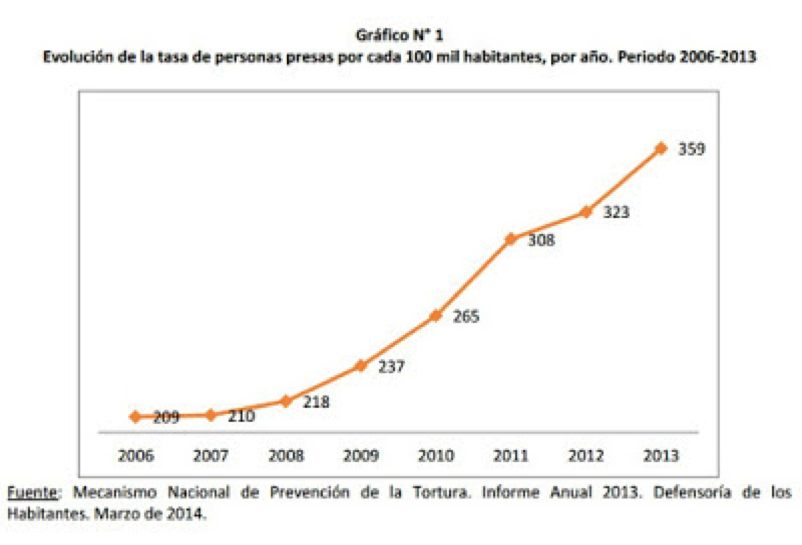



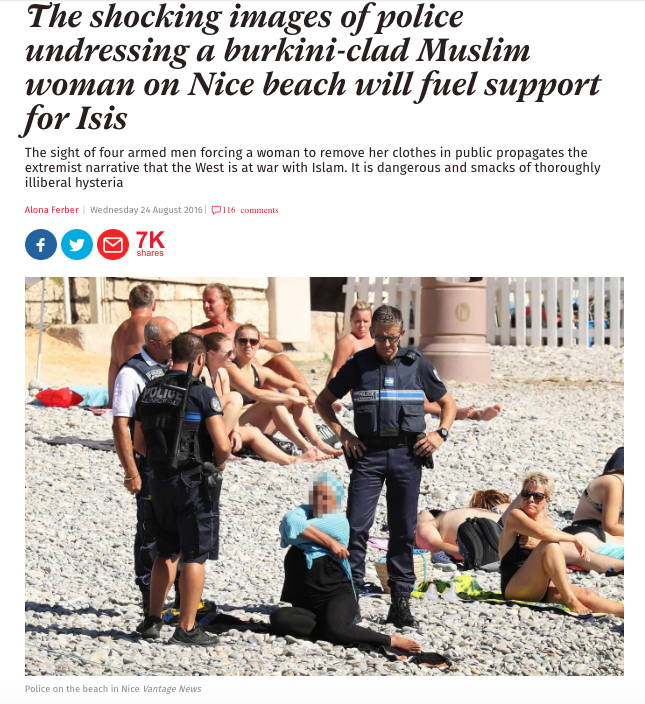 It’s crucial to note here that one of the main exhibits held-up by the French state and its reactionary media – to justify the emergence of the newer, nastier version of itself, now permanently suspended in a ‘state of emergency’ – is the notorious
It’s crucial to note here that one of the main exhibits held-up by the French state and its reactionary media – to justify the emergence of the newer, nastier version of itself, now permanently suspended in a ‘state of emergency’ – is the notorious 
